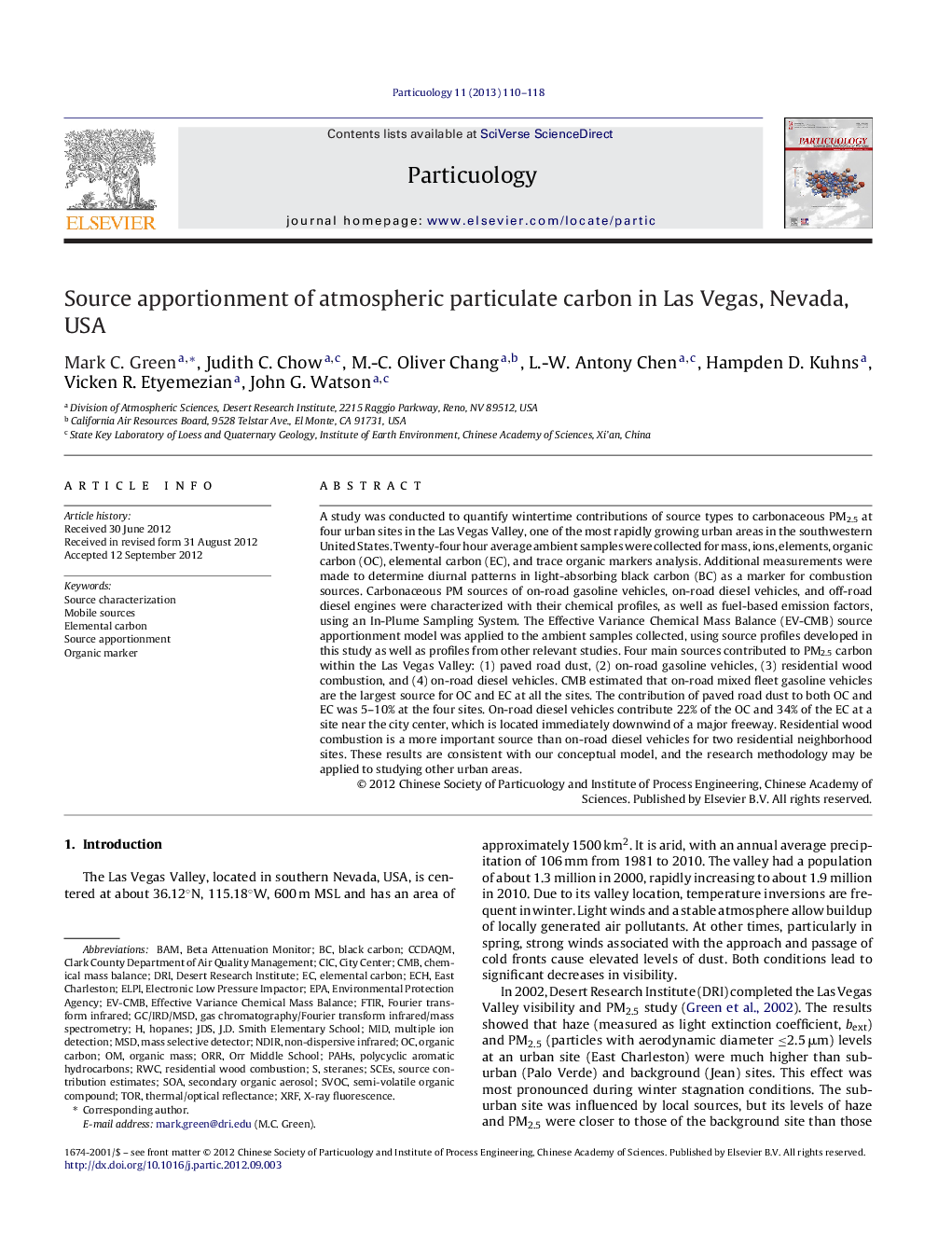| کد مقاله | کد نشریه | سال انتشار | مقاله انگلیسی | نسخه تمام متن |
|---|---|---|---|---|
| 672052 | 887482 | 2013 | 9 صفحه PDF | دانلود رایگان |

A study was conducted to quantify wintertime contributions of source types to carbonaceous PM2.5 at four urban sites in the Las Vegas Valley, one of the most rapidly growing urban areas in the southwestern United States. Twenty-four hour average ambient samples were collected for mass, ions, elements, organic carbon (OC), elemental carbon (EC), and trace organic markers analysis. Additional measurements were made to determine diurnal patterns in light-absorbing black carbon (BC) as a marker for combustion sources. Carbonaceous PM sources of on-road gasoline vehicles, on-road diesel vehicles, and off-road diesel engines were characterized with their chemical profiles, as well as fuel-based emission factors, using an In-Plume Sampling System. The Effective Variance Chemical Mass Balance (EV-CMB) source apportionment model was applied to the ambient samples collected, using source profiles developed in this study as well as profiles from other relevant studies. Four main sources contributed to PM2.5 carbon within the Las Vegas Valley: (1) paved road dust, (2) on-road gasoline vehicles, (3) residential wood combustion, and (4) on-road diesel vehicles. CMB estimated that on-road mixed fleet gasoline vehicles are the largest source for OC and EC at all the sites. The contribution of paved road dust to both OC and EC was 5–10% at the four sites. On-road diesel vehicles contribute 22% of the OC and 34% of the EC at a site near the city center, which is located immediately downwind of a major freeway. Residential wood combustion is a more important source than on-road diesel vehicles for two residential neighborhood sites. These results are consistent with our conceptual model, and the research methodology may be applied to studying other urban areas.
Figure optionsDownload as PowerPoint slideHighlights
► Inorganic and organic markers in PM2.5 were measured for CMB source apportionment.
► Region-specific on- and off-road mobile sources were characterized by in-plume system.
► Diurnal variation in black carbon reveals both mobile and biomass burning sources.
► CMB determines mixed-fleet gasoline vehicles a major source of carbonaceous aerosol.
Journal: Particuology - Volume 11, Issue 1, February 2013, Pages 110–118